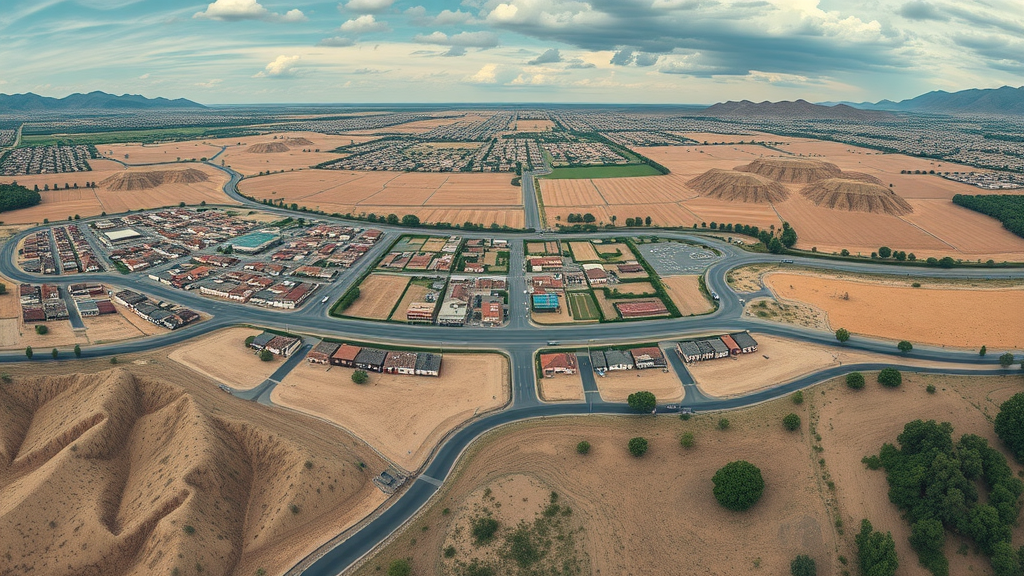Did you know that nearly 50% of legal settlements experience delays due to predictable yet often overlooked factors? Whether you’re planning a move, wondering why new neighborhoods seem to grow overnight—or stagnate for years—the timeline of human settlement is shaped by more than meets the eye. In this comprehensive guide, we’ll unveil the pivotal factors affecting settlement duration and show you how settlement patterns influence where people live, work, and thrive. Read on for real-world case studies, expert insights, and practical steps to master your understanding of settlement duration .
- Discover how nearly 50% of legal settlements are delayed due to factors that can often be predicted and managed—insightful perspectives on human settlement and settlement pattern challenges.

Understanding the Factors Affecting Settlement Duration: Why Some Settlements Take Longer
To truly understand the factors affecting settlement duration , it’s essential to recognize that settlement is rarely straightforward. Each human settlement , whether urban or rural, evolves subject to a complex web of influences. Environmental factors , such as climate change and natural resource distribution, interact with economic activities , population growth, legal barriers, and settlement patterns. These elements jointly influence how quickly new settlements are established or existing ones expand.
For example, areas with fertile soil and abundant raw materials tend to experience faster growth of settlements, while those affected by policy bottlenecks or severe geographical challenges might face years of delay. Urban areas may sprout quickly due to economic incentives, but can be bogged down by regulatory frameworks and infrastructural readiness. As we delve deeper, you’ll see that truly understanding human settlement means appreciating the interconnected drivers that affect every stage of the process.
Core Factors Affecting Settlement Duration in Human Settlement Processes
Environmental Factors and Their Impact on Settlement Patterns
The role of environmental factors in shaping settlement pattern cannot be overstated. Climate change , topography, and water availability profoundly influence whether settlement is quick or protracted. For instance, regions with unpredictable weather conditions or those prone to natural disasters may witness significant delays in the establishment and growth of settlements. Floodplains, arid deserts, or mountainous zones often deter rapid settlement due to infrastructure challenges and resource scarcity.
Conversely, the allure of fertile soil , access to rivers, or mild climates can accelerate the pace of human settlements , as people are naturally drawn to areas where survival and economic activities are more viable. The way these factors influence human settlements becomes clear in real-world examples like the Nile Valley or the rapid urbanization of coastal cities—where environment is both a boon and a challenge to settlement growth.
- Explore environmental factors such as climate change, topography, and water availability that influence the growth of settlements and affect settlement duration.

Economic Activities and Human Settlements: Influences on Duration
The vitality of economic activities in a region plays a central role in shaping the duration of human settlements . Areas with robust employment opportunities, stable markets, and diverse industries attract swift and sustained population growth. Human geography studies consistently demonstrate that when people can access steady income streams, settlements develop rapidly and expand organically.
However, regions left vulnerable by economic downturns or lacking in infrastructure can see significant delays. Settlement growth can be stunted by high unemployment, volatile markets, or an over-reliance on single-resource economies. Changes in economic development can even reverse migration patterns, causing contraction rather than expansion. For sustainable settlement patterns , a delicate balance between economic opportunity and population needs is essential.
- Analyze how economic activities, employment rates, and market stability shape settlement patterns and the overall length of settlement processes.
Settlement Pattern Types and Their Effect on Settlement Duration
Not all settlement patterns are created equal. The distinction between compact (nucleated) , linear , and dispersed settlements can determine how quickly a community takes root. Compact settlements often form in fertile, resource-rich areas, facilitating quick development thanks to close proximity and shared infrastructure. Such nucleated settlements grow efficiently but are vulnerable to resource shortages or environmental risks.
In contrast, linear settlements develop along transportation corridors—rivers, roads, or railways—enabling methodical but sometimes slower growth. Dispersed settlements, stretched across broad landscapes, face unique obstacles: infrastructure costs are higher, service delivery is complex, and community cohesion takes time. These patterns of settlement directly affect the speed and sustainability of settlement duration.
- Contrast compact, linear, and dispersed settlement patterns and examine their influence on time delays in human settlement.

Human Geography and Social Dynamics: Factors Affecting Settlement Duration
The study of human geography brings focus to population density, migration trends, and social structures—all elements that distinctly impact how quickly settlements evolve. Densely populated regions, for example, may experience swift settlement growth driven by resource competition or urban migration. On the other hand, settlements with fragile or informal social structures might deal with disputes, inefficient resource management, or policy neglect, leading to slower development.
Migration is both a cause and effect within settlement patterns . In some cases, massive influxes of new residents (such as refugees or labor migrants) strain infrastructure, causing delays. In others, vibrant community networks and cultural practices pave the way for faster assimilation and settlement expansion. Understanding these human and cultural variables is essential to addressing the factors affecting settlement duration holistically.
- Understand how population density, migration trends, and social structures within human settlements contribute to delays.
How Legal, Administrative, and Policy Barriers Influence Factors Affecting Settlement Duration
One often-overlooked aspect of settlement duration involves the tangled web of legal frameworks , administrative procedures , and policy shifts . Regardless of environmental or economic readiness, bureaucratic delays and shifting regulations can hold up settlement growth for months—or even years. The issuance of land titles, rezoning approvals, and compliance with evolving urban policies serve as critical bottlenecks in both urban and rural regions.
The impact of these administrative factors is especially apparent in rapidly developing urban areas, where demand outpaces the legal system’s ability to provide clearances or enforce accountability. Policy changes designed to curb urban sprawl or protect ecologically sensitive areas, while well-intentioned, can inadvertently slow down settlement expansion.
"Policy bottlenecks and regulatory red tape can extend the settlement process by months or even years, regardless of economic incentives." – Urban Development Analyst
- Examine how legal frameworks, administrative procedures, and policy shifts serve as critical factors affecting settlement duration in both urban and rural regions.

Technological Disruptions and Modern Changes in Human Settlement Patterns
The proliferation of digital platforms, rise of remote work, and emergence of smart cities are fundamentally reshaping the factors affecting settlement duration . Technological innovations reduce barriers for both developers and residents, allowing rapid settlement in regions previously constrained by distance or poor infrastructure. Entire urban areas now grow around innovations—like fiber-optic connectivity or decentralized energy grids—rather than traditional economic centers.
Smart city initiatives frequently streamline administrative processes, enhance service delivery, and foster sustainable settlement patterns . Likewise, digital mapping tools and online governance platforms speed up everything from land registration to utility connection, further cutting down on settlement delays. Keeping abreast of these modern transformations is key for stakeholders eager to minimize the impact of bureaucratic and infrastructural hurdles.
- Investigate how digital platforms, remote work, and smart city initiatives are reshaping human settlements and the factors affecting settlement duration.

Unpacking the Major Factors Affecting Settlements: From Climate Change to Infrastructural Readiness
Beyond the subtle influences of policy and technology, some major drivers consistently impact settlement patterns and their timelines. Climate change stands as one of the most significant obstacles, causing displacement, resource shortages, and reevaluation of where people can sustainably live. Similarly, the frequency of natural disasters such as floods, hurricanes, or wildfires dramatically redirects or slows the patterns of human settlement.
Meanwhile, the level of infrastructural investment —from roads and utilities to schools and hospitals—can either kick-start a rapid phase of settlement growth or impede development for decades. The most resilient and enduring settlements over time are those with robust infrastructure and the ability to adapt to evolving environmental and demographic challenges.
- Address the role of climate change, natural disasters, and infrastructural investments as major factors affecting settlements and how they relate to settlement patterns.
Comparing Rural and Urban Factors Affecting Settlement Duration
| Factor Category | Rural Settlements | Urban Settlements |
|---|---|---|
| Environmental Factors | Resource dependency (fertile soil, water); greater exposure to natural disasters | Urban heat islands; pollution; limited green space affecting sustainability |
| Economic Activities | Agriculture-based; limited diversification; out-migration common | Diverse industries; job opportunities attract rapid migration |
| Social Structures | Tight-knit communities; slower integration of newcomers | Transitory populations; diverse demographics; rapid assimilation |
| Infrastructure | Often underdeveloped; slow improvements; reliance on local resources | Advanced infrastructure; quick upgrades but bureaucratic complexity |

Real-World Examples: How Factors Affecting Settlement Duration Play Out Globally
Consider the rapid growth of settlements in Southeast Asia’s megacities: a combination of economic activities , infrastructural investment, and proactive governance has enabled cities like Jakarta and Ho Chi Minh City to expand swiftly—albeit with environmental trade-offs. Meanwhile, regions in sub-Saharan Africa and the Middle East face significant settlement delays primarily due to environmental constraints, policy challenges, or the lingering effects of conflict.
Statistical studies from the United Nations show that climate-related obstacles account for more than a third of settlement delays globally, a figure corroborated in high-growth but risk-prone zones. By examining diverse case studies, from the bustling migration-fueled expansion of urban areas to rural depopulation zones, clear patterns emerge regarding which factors affecting settlement duration are most influential in a given context.
- Use case studies and statistics from cities experiencing rapid growth of settlements and regions facing settlement delays due to environmental or economic obstacles.
"In rapidly urbanizing zones, unresolved environmental constraints are responsible for over one-third of all settlement delays." – Settlement Studies Journal
Expert Answers: People Also Ask About the Factors Affecting Settlement Duration
What are the factors that affect settlement?
- Factors affecting settlement include environmental conditions like climate and resource availability, economic activities such as job markets and industrial diversification, infrastructural readiness, legal or policy frameworks, and the social dynamics within human settlements . These influences work together to shape how quickly and successfully settlements are established or expanded.
Which is a major factor affecting settlements?
- Among diverse influences, environmental factors stand out as a major determinant. Climate change , access to natural resources, and geographical constraints dictate not only where people can live but also the settlement pattern and how long it takes for new settlements to be established and thrive.
What are the factors influencing the growth of settlements?
- The growth of settlements is driven by sustainable economic activities, patterns of population migration, access to basic services like clean water and education, and supportive policy environments. The interplay of these factors determines settlement speed and sustainability.
Which of the following factors affect the settlement?
- A variety of forces affect the settlement process, including environmental factors , economic stability or development, policy and legal frameworks, technological advancements, and the physical geography of the region. Together, they explain the diversity in settlement timelines across the globe.
Essential Takeaways on the Factors Affecting Settlement Duration
- Multiple interconnected factors —from environmental conditions to legal frameworks—determine settlement duration.
- Human settlement pattern type and geography play pivotal roles in how quickly settlements progress.
- Understanding these variables can help identify, predict, and minimize settlement delays.
Master the Settlement Process: Next Steps in Understanding the Factors Affecting Settlement Duration
- Stay ahead of settlement delays by staying informed on shifts in human settlement trends and settlement pattern dynamics. Learn more: visit pugetsoundinjurylaw.com/
Apply this understanding to anticipate, adapt, and streamline settlement processes—be proactive in addressing delays, bridging stakeholder collaboration, and advocating for policy improvements today.
Understanding the factors that influence settlement duration is crucial for individuals navigating personal injury claims. Key elements include the complexity of the case, the severity of injuries, and the willingness of parties to negotiate. For instance, cases involving severe injuries often require more detailed investigations and extensive negotiations, which can extend the settlement timeline. ( usattorneys.com ) Additionally, the efficiency of the court system and the workload of insurance companies can also impact how quickly a settlement is reached. ( wenzelfenton.com )
For a comprehensive understanding of these factors, consider reading “5 Factors That Will Affect the Length of a Personal Injury Claim” by Market Business News. This article delves into the complexities of personal injury claims, highlighting how elements like accident complexity and injury severity can influence the duration of the settlement process. ( marketbusinessnews.com )
If you’re serious about navigating the personal injury claim process efficiently, these resources will provide valuable insights into the factors that can affect settlement duration.
 Add Row
Add Row  Add
Add 




Write A Comment